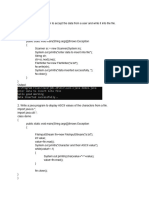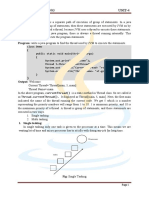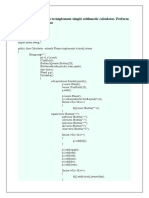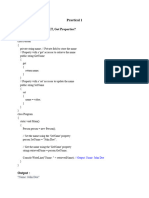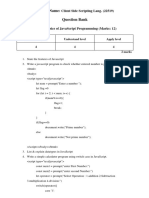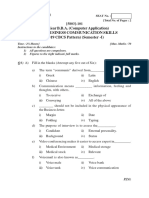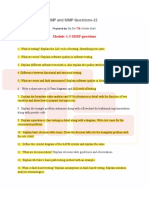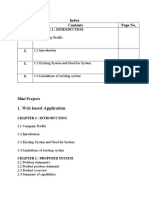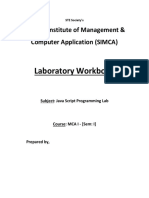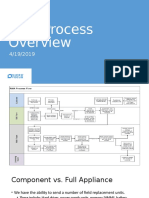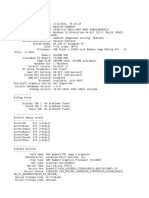0% found this document useful (0 votes)
1K views12 pagesJava Multithreading Practical Guide
This document contains solutions to 7 questions on multithreading programs in Java. The programs include:
1. Displaying vowels from a string using multiple threads.
2. Simulating a traffic signal using threads that change the light color every 5 seconds.
3. Drawing a temple flag on an applet container using threads.
4. Simulating a car race with two cars moving across the frame in different threads.
5. Blinking text on a frame using threads.
6. Moving text across a frame in different directions using threads.
7. Simulating a bouncing ball that changes color with each bounce using threads.
Uploaded by
priyankaCopyright
© © All Rights Reserved
We take content rights seriously. If you suspect this is your content, claim it here.
Available Formats
Download as PDF, TXT or read online on Scribd
0% found this document useful (0 votes)
1K views12 pagesJava Multithreading Practical Guide
This document contains solutions to 7 questions on multithreading programs in Java. The programs include:
1. Displaying vowels from a string using multiple threads.
2. Simulating a traffic signal using threads that change the light color every 5 seconds.
3. Drawing a temple flag on an applet container using threads.
4. Simulating a car race with two cars moving across the frame in different threads.
5. Blinking text on a frame using threads.
6. Moving text across a frame in different directions using threads.
7. Simulating a bouncing ball that changes color with each bounce using threads.
Uploaded by
priyankaCopyright
© © All Rights Reserved
We take content rights seriously. If you suspect this is your content, claim it here.
Available Formats
Download as PDF, TXT or read online on Scribd
/ 12





